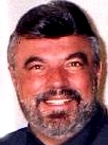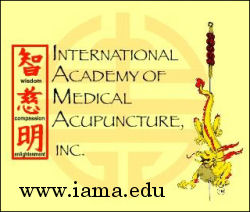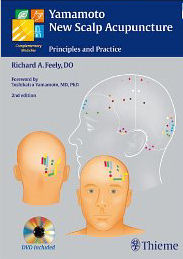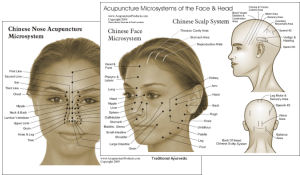Acupuncture & TCM Articles

Acupuncture Articles
by John A. Amaro L.Ac., Dipl.Ac.(NCCAOM), DC
 Dr. Amaro is an internationally known author, lecturer and practitioner beginning his practice of Acupuncture and Chiropractic in 1971. He has led 13 diplomatic Acupuncture study tours of The People's Republic of China escorting more than 500 doctors and practitioners. He has personally studied Acupuncture in nine separate Asian nations. Dr. Amaro is an internationally known author, lecturer and practitioner beginning his practice of Acupuncture and Chiropractic in 1971. He has led 13 diplomatic Acupuncture study tours of The People's Republic of China escorting more than 500 doctors and practitioners. He has personally studied Acupuncture in nine separate Asian nations.
He has received Certification in Acupuncture through the Columbia Institute of Chiropractic in 1973. This was one of the first Acupuncture postgraduate education programs for physicians in North America commencing in 1972.
He has been certified by the Waseda Acupuncture College in Tokyo, Japan in 1974 and graduated from the Chinese Medical Institute, Kowloon, China in 1976. He had previously taken postgraduate studies at the Tai Chung Medical School Taipei, China 1973.
CEREBRAL ACUPUNCTURE
(FOR NEUROLOGICAL SYNDROMES)
John A. Amaro L.Ac., Dipl.Ac.(NCCAOM), DC
It would be highly unlikely to find an adult today who has never heard of acupuncture or who could not give a definition (right or wrong) as to what it is. Most people when asked, will say acupuncture is an ancient therapy which is thousands of years old. Even though this is true, there are a number of procedures which fall under the heading of acupuncture which in fact are not ancient, perhaps the most notable is "Cerebral Acupuncture".
Cerebral Acupuncture otherwise known as Scalp or Skull acupuncture, is a system which does not utilize acupoints, but instead, specific zones on the head which have very specific indications.
Generally credited with an unnamed "barefoot" doctor in central China, history is now telling us, Cerebral Acupuncture was first theorized and applied by Dr. Huang Xue-Long in 1934. Cerebral Acupuncture was resurrected in the early 1970's coincidentally corresponding with North America's interest in acupuncture.
A visit to any hospital, clinic, Institute or research center in China will see numerous patients receiving this relatively new procedure. It is the number one treatment for any neurological syndrome. It is extremely easy to apply and the clinical results border on the miraculous in many cases.
Yamamoto New
Scalp Acupuncture:
Principles and Practice
 
It is common to see especially in the communal clinics of remote China, the patient male or female, having their head shaved and longer than usual slender needles being threaded just under the skin of the scalp to stimulate a particular zone or zones. It has been my observation, the head is not often shaved in the clinics of the larger cities.
I could literally fill an entire column every month for the next year simply relating some of the incredible case histories I personally have encountered with the utilization of Cerebral Acupuncture but it's probably best for you to create your own success stories as opposed to reading about mine.
Since "necessity is the mother of invention", I began to experiment with a variety of different type of stimulation's on returning from my first trip to China in 1973 where I first witnessed Cerebral Acupuncture. Since I was practicing in a state which did not allow for puncturing of the skin by D.C.'s, I experimented with everything from the "teishein" (mechanical stimulation) through electronic stimulation and finally to laser. I have concluded that virtually everything works!!!!!!!
The best part of Cerebral Acupuncture is that it's a "THIS" for "THAT" system. Meaning, "THIS" zone is specific for "THAT" problem and "THAT " zone is great for "THIS" situation. In other words, "what you see is what you get". The EQUILIBRIUM zone is specific for equilibrium, whereas the "LEG and FOOT" zone does just that.
The primary landmark to determine locations, is the acupuncture point known as GV 20 at the extreme top center of the head. Draw an imaginary line from the very extreme top of the ear to the center of the skull, this is GV 20. The "CHOREA" zone begins ½ human inch anterior to GV 20 whereas the "MOTOR" zone begins ½ human inch posterior to this point.
With non-invasive procedure, one does not have to be specific as we would with a needle therefore the patient or patients family can be advised to stimulate these points themselves with a comb, brush or similar modality.

Perhaps the most notable and certainly most utilized zones for a clinical practitioner would be the SENSORY and MOTOR zone, both of these zones are divided into an upper 1/5 a middle 2/5 and a lower 2/5. The SENSORY zone upper 1/5 is specific for leg, back, neck and occiput pain, numbness or paraesthesia. The middle 2/5 is for upper limb involvement whereas the lower 2/5 is for facial paralysis and paraesthesia, migraine and TMJ dysfunction. The MOTOR zone upper 1/5 is for the lower extremity, the middle 2/5 is for the upper extremity and the lower 2/5 is for paralysis, loss of and slurring of speech with drooling.
The MOTOR and SENSORY can be used for virtually any condition whereby motor and or sensory symptomotology occurs. The other well used zone is the CHOREA zone which deals with any choreic movement such as tremors, Parkinsons, Huntingtons Chorea and similar neurological dysfunctions. The VERTIGO and HEARING zone is specific for Meniere's Syndrome and the FUNCTIONAL zone is specific for the function of the limbs. Visual is not for nearsightedness but for neurologically induced visual disturbance. The same is true of SPEECH (neurologicaly induced such as CVA).
The LEG and FOOT zone is tremendous for sciatica, femoral nerve involvement or any syndrome which affects the leg and or foot especially when combined with the MOTOR or SENSORY zone.
The rule is to stimulate the opposite side of the involvement, however most practitioners in China stimulate bilateral. If you are using stimulation such as a quartz peizo stimulator, I suggest general stimulation back and forth over the entire zone for approximately 20 -30 seconds with a multitude of stimulations. The same is generally true for electronic stimulation of either micro or macro current. If you are using teishein, the same general rule applies and with laser, stroking the light source over the entire zone for about 20 seconds per inch is a standard rule of treatment.
This chart should be available in each treatment room of your office for quick and easy reference. Feel free to photo copy the accompanying chart or a full color chart is available through the International Academy of Clinical Acupuncture.
Cerebral Acupuncture is incredibly effective, quick in its application, does not require invasive procedure, does not require a background or knowledge of acupuncture and therefore I can see no reason whatsoever why the reader of this article wouldn't add this important work to your arsenal of procedures immediately. It is truly a significant addition to healing.
| 